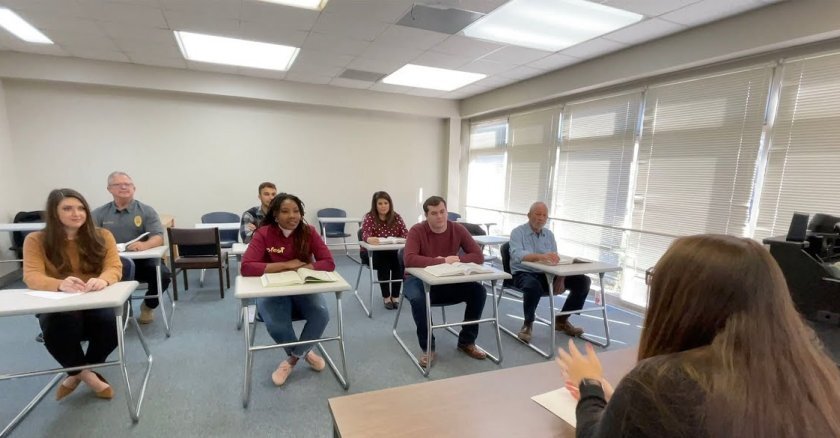In Brief:
Just under 20 million people work for state and local governments. Despite its size, there’s a widening gap between the number of public-sector employees and their ability to meet increasing public service needs. In August 2023, the U.S. Bureau of Labor Statistics reported 870,000 job openings at the state and local level.
The past three years have seen a significant drop in the number of employees working in the public sector. This decrease stems from the number of people who left the workforce as a result of the COVID-19 pandemic, people who retired or transferred to careers in the private sector and the public sector’s difficulties in both hiring and retaining new workers in the long term.
“Coming out of the pandemic, we have had a lot of vacancies, and they are now starting to impact services,” says Cara Woodson Welch, chief executive officer of the Public Sector HR Association (PSHRA). The dearth of available workers has raised problems about hiring practices, she says. “So even though it does take time to look and really review, not only job requirements, [we are] asking [ourselves] ‘Is the pay appropriate?,’ ‘Have we titled the job correctly?,’ ‘Are we reaching out to the expanded pool that we could be reaching out to?'”
These questions have provided a new impetus for HR professionals to try and solve government’s hiring problems. They’re meeting the challenge of recruiting and retaining employees by widening their net and turning to skills-based hiring — prioritizing skills and field experience over college degrees and professional licenses that may not be integral to certain entry-level positions.
So far, 13 states have removed unnecessary degree requirements for hard-to-fill roles in state government, according to Brookings, the research institute.
For now, skills-based hiring can be readily found in IT departments. But more broadly, federal, state and local governments have begun to utilize it in their own hiring practices, with Welch noting that “it’s almost a cycle, in a way, so it may be trickling down, but then it's also seeding back up.”
Skills-Based Requirements Accelerate Diverse Hiring
MissionSquare Research surveyed249 state and local government human resources managers, and found 51 percent reported they often have to re-open recruitments because they weren’t getting a sufficient amount of qualified candidates. Additionally, 29 percent said they were dropping degree requirements for some positions. As a result of HR professionals and recruiters working to widen the net of applicants to state and local jobs, there’s been an increase in applicants that are shifting the needle when it comes to diversity.
Boulder County, Colo., replaced education with skills-based hiring and, between 2019 and 2021, they saw a 10 percent increase in applicants and employees of color. “It really increases the diversity,” says Melissa Barker, VP of practice development at Duffy Group Inc. According to Barker, the change to skills-based hiring requirements brought in new kinds of people to the government workforce.
“In my experience doing government recruiting, the people who are most successful in government jobs are those that connect with the mission,” she says. “So it's certainly a detriment to public service, to have people who want to do this because they have a connection to the mission, they're passionate about public service, but they're prohibited from having the job because they don't have a degree.”
Recently, California Gov. Gavin Newsom signed Executive Order N-11-23 which encourages prioritizing programs that will strengthen access to state government jobs by increasing education workforce pipelines for the workforce and assess current job requirements to decide what jobs do not require a four-year degree upon application. While the data around who’s being hired isn’t yet readily available, CalHR is already seeing successes with their efforts, beginning with the 1,400 people who came to the recent job fair that had no degree requirements.
“Approximately 1,400 attendees came, where we broadcasted all the actual classifications that you can apply for, and that was what we just had from that state fair,” says Monica Erickson, CalHR’s deputy director. “CalHR has made an effort to remove barriers from 169 positions in order to make that happen,” she says. “And then we recently changed one of the main positions that required education. And we removed that. That was called the staff services analyst. So that's huge!”
Gov. Newsom’s effort to reduce barriers to state jobs isn’t the first time that California has pushed to increase equity in the state and local workforce. Between 2017 and 2021, Los Angeles received over 12,000 applications at 18 job sites as a direct result of the city’s Targeted Local Hire program, which was an attempt at connecting residents from underrepresented and underserved communities with opportunities to get careers with the city government.
As more state and local government HR professionals look to skills-based hiring to find talented employees, there are two main things that they should keep in mind. First, upskilling — training employees so that they can advance their careers in their field and providing them incentive to stay and move up the ladder — is an important way to retain employees. Second, some of the requirements for these positions haven’t been updated in years and require a second look to make sure that, for example, you’re not asking more than the job requires, scaring off potential applicants who can do the work but don’t have the degree to prove it.













